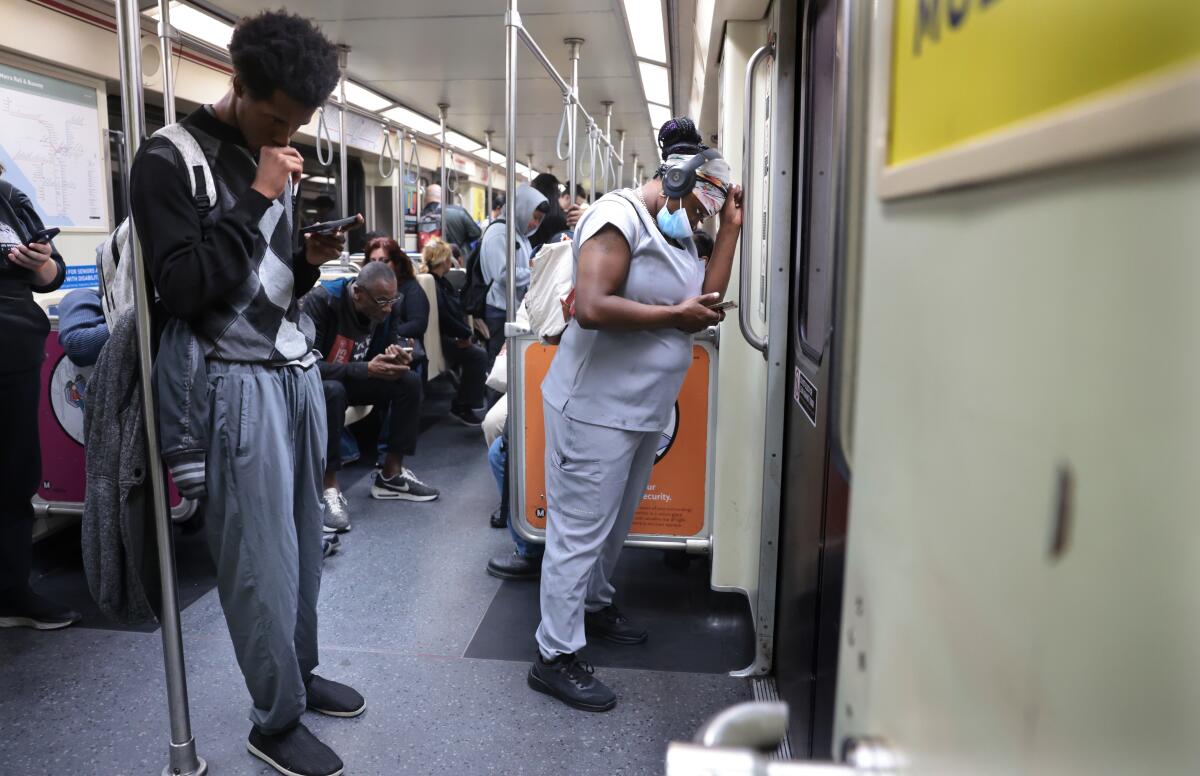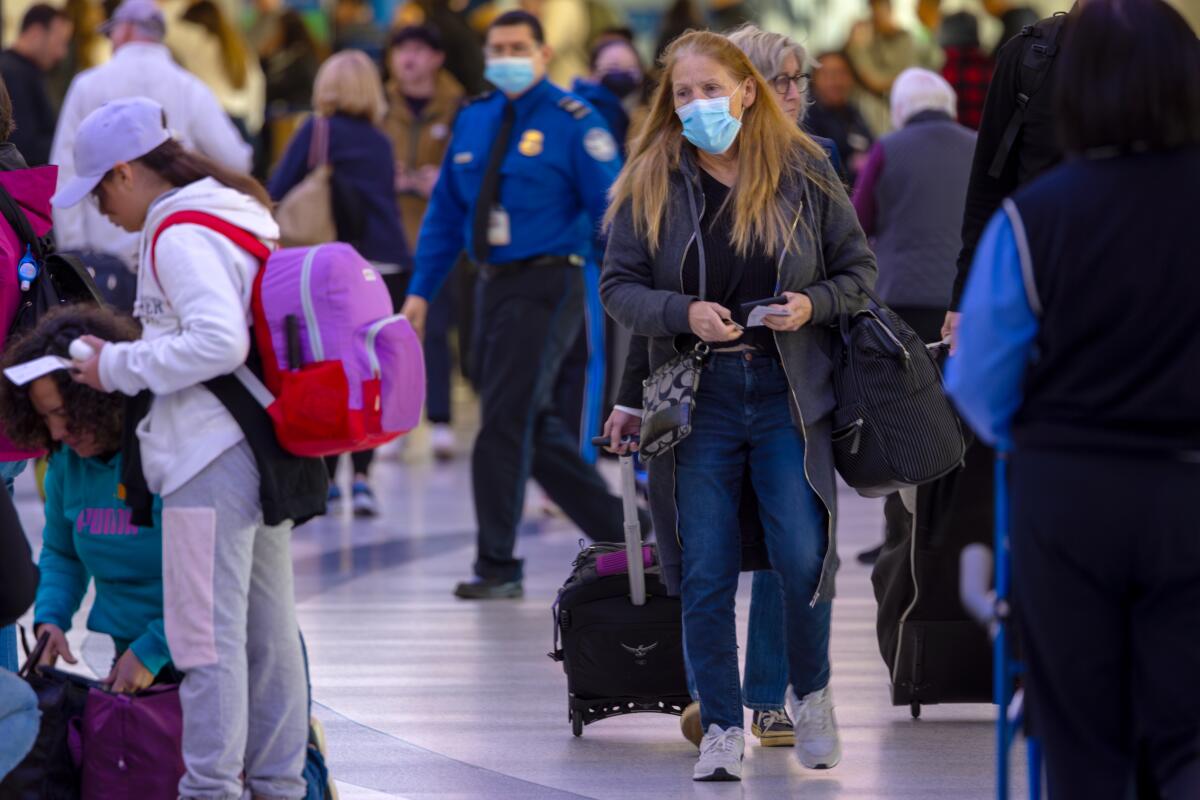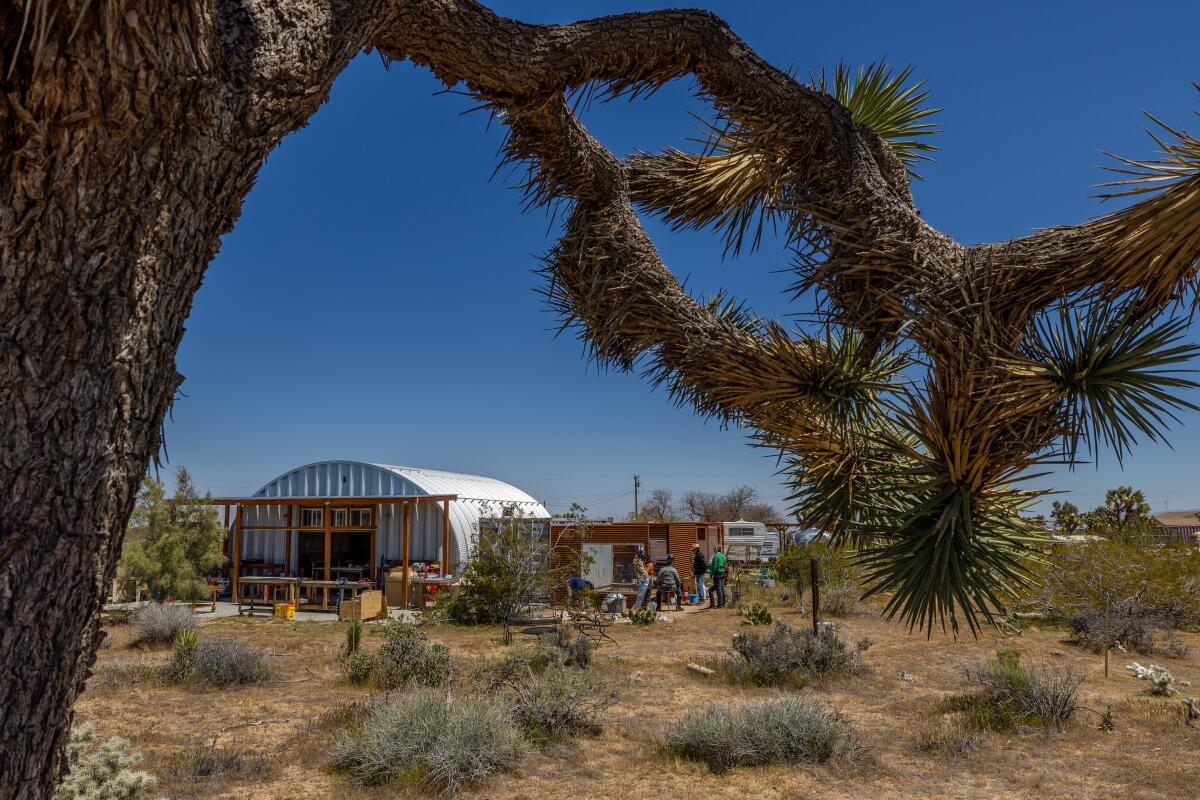New COVID variants are spreading in California. How worried should we be?

- Share via
Good morning. It’s Wednesday, May 29. Here’s what you need to know to start your day.
- COVID is rising in California. How to protect yourself from subvariants
- UCLA and UC Davis workers strike over treatment at pro-Palestinian protests
- Artists priced out of Los Angeles head to this creative hub in the high desert
- And here’s today’s e-newspaper
You're reading the Essential California newsletter
Our reporters guide you through our biggest news, features and recommendations every morning
You may occasionally receive promotional content from the Los Angeles Times.
How worried should we be about the new COVID variants?
The national COVID-19 emergency ended just over a year ago. Gov. Gavin Newsom terminated California’s emergency orders at the end of February 2023. But coronavirus is still out there — now in more variants and subvariants. The newest ones causing concern are officially known as KP.2, KP.3 and KP.1.1 but have been given the nickname FLiRT (an acronym for the amino acid changes that led to the strains’ mutations).
The latest data show that those subvariants are the dominant COVID family in the U.S., jumping from about 20% of infections a month ago to more than 50%.
State health officials say summer could bring an uptick in cases following a low-transmission spring.
“COVID-19 concentrations in wastewater have suggested increases in several regions across California since early May,” the state Department of Public Health said in a statement last week. “Test positivity for COVID-19 has been slowly increasing since May.”

Health officials won’t be surprised to see increased COVID cases this summer, just as we’ve experienced in previous summers. We travel more, congregate on weekends and holidays and tend to gather inside to escape the heat.
So how worried should we be? The Times’ Rong-Gong Lin II provided some context in his reporting this week:
“Despite their increased transmissibility, the new mutations don’t appear to result in more severe disease. And the vaccine is expected to continue working well, given the new subvariants are only slightly different from the winter version.”
However, because the FLiRT subvariants are more easily transmitted, doctors advise that people at higher risk for severe COVID-19 infections take precautions. Those include:
- Staying up to date on COVID vaccinations
- Avoiding sick people, some of whom might not know if they have COVID or a cold
- Masking up in crowded settings
- Taking Paxlovid (which for many should be easier to get) if infected
The strongest risk factor for severe COVID-19 continues to be age, according to the CDC. People with certain underlying medical conditions — including asthma, cancer, diabetes and serious heart conditions — are also at heightened risk.
“California recently achieved a significant COVID milestone — zero deaths on a single calendar day, April 2, a feat not achieved since the first days of the pandemic,” Rong-Gong noted. That week, he wrote, Los Angeles County also experienced a new record low for deaths — an average of 0.14 a day.
Fewer people are being hospitalized and dying from COVID-19, but health officials say the virus remains deadlier than the flu. And one doctor Rong-Gong spoke to said evidence is mounting that getting COVID more times increases the risks of developing long COVID.
Since the start of the pandemic, more than 107,000 Californians have died of COVID-19.
Today’s top stories

Pro-Palestinian campus unrest:
- Kaffiyehs and pickets. UCLA and UC Davis workers strike over treatment at pro-Palestinian protests.
- UC worker strike to hit UCLA and Davis next. A looming question: Is this walkout legal?
- UC academic workers’ strike begins as pro-Palestinian activism enters new phase.
Ozempic:
- Millions of Americans need drugs like Ozempic. Will it bankrupt the healthcare system?
- ‘Miracle’ weight-loss drugs could have reduced health disparities. Instead they got worse.
- Column: Fears about ‘Ozempic babies’ show how woeful U.S. women’s healthcare really is.
Climate and environment:
- California’s surfboard-mooching sea otter has returned to Santa Cruz for the summer.
- Sea urchins made to order: Scripps scientists make transgenic breakthrough.
- Water recycling gets a boost in Southern California with new federal funding.
More big stories:
- Matthew Perry and the ketamine boom: Expensive, dangerous and very ‘en vogue.’
- The newest election battlefield for abortion: State supreme courts.
- A traveler carries measles through LAX as cases rise around the U.S.
- A lifeguard who took down Pride flags at a Pacific Palisades beach sues L.A. County over religious discrimination.
- Most Asian Americans think SAT but not race is fair to consider for college admissions.
- Who else was stealing? Conspiracy plea deepens mystery in San Joaquin Valley water heist.
- LAPD searches for ‘General Hospital’ actor’s killers, seeks fingerprints, video.
- OpenAI forms safety and security committee as concerns mount about AI.
- ‘I’m sorry’: David DePape has been resentenced to 30 years for attack on Pelosi family.
- Appreciation: Bill Walton embraced a different mindset on personal success and heroes.
Get unlimited access to the Los Angeles Times. Subscribe here.
Commentary and opinions
- Robin Abcarian: Samuel Alito’s ethical lapse isn’t the Supreme Court’s first. This is why it’s different.
- Editorial Board: Walmart hasn’t stopped pork suppliers from confining pregnant sows in cruel cages. Time for shareholders to step up.
- Michael Hiltzik: With Live Nation lawsuit, government says it’s fed up with alleged corporate scofflaws.
- Editorial Board: MLB finally embraces all of the major leagues. Including the Black ones.
- Gustavo Arellano: The Democratic civil war behind an Anaheim recall election.
Today’s great reads
Where does L.A.’s leftover produce go? This group helps get tons to the hungry every day. Food Forward saves nearly 2 million pounds of produce every week. It all started with a slow walk through a Los Angeles neighborhood full of unpicked fruit.
Other great reads:
- Michael McDonald and Paul Reiser on the importance of forgiveness and the problem with gossip.
- Jacarandas are blooming now in L.A., but why are some lagging behind the purple party?
How can we make this newsletter more useful? Send comments to essentialcalifornia@latimes.com.
For your downtime
Going out
- 🌵Artists priced out of Los Angeles head to this creative hub in the high desert.
- 🌿🌮 Mi Los Angeles: Celebrities’ favorite Latino owned businesses in L.A.
Staying in
- 📺 Six little-known series you won’t regret making time for.
- 🧑🍳 Here’s a recipe for orange-blossom yogurt lemon loaf.
- ✏️ Get our free daily crossword puzzle, sudoku, word search and arcade games.
And finally ... a great photo
Show us your favorite place in California! We’re running low on submissions. Send us photos that scream California and we may feature them in an edition of Essential California.

Today’s great photo is from Times contributor Jheyda McGarrell. Pictured is South-Central rapper Jay 305 at Scent Bar DTLA.
Have a great day, from the Essential California team
Ryan Fonseca, reporter
Kevinisha Walker, multiplatform editor and Saturday reporter
Christian Orozco, assistant editor
Karim Doumar, head of newsletters
Check our top stories, topics and the latest articles on latimes.com.
Sign up for Essential California
The most important California stories and recommendations in your inbox every morning.
You may occasionally receive promotional content from the Los Angeles Times.






